Knowing how to lock your garage door manually is a fundamental home security skill, not just a backup plan. It’s the move you make after a power outage, when the opener gives out, or anytime you want an extra layer of physical security. When technology fails, this is what keeps your home protected.
Why Manual Locking Is a Modern Necessity
Relying completely on your automatic opener is a gamble. Sure, electronic systems are convenient, but they can fail, leaving the biggest entryway to your home wide open. Understanding how to lock your garage door by hand turns this potential weakness into a strength, giving you direct control over your home's security.
Scenarios Demanding a Manual Lock
Think beyond a simple power outage. A manual lock becomes your best friend in a few common situations:
- Malfunctioning Opener: Your remote might be dead, or the opener motor could burn out. Either way, you're left with a door that's unlocked and won't budge.
- Extended Vacations: Believe it or not, sophisticated thieves can use code-grabbing devices to duplicate your remote's signal. A physical, manual lock is a tangible barrier that can't be hacked.
- Storms or Grid Issues: During severe weather, power can be out for days at a time. A manual lock ensures your home is secure for the entire event, not just the first few hours.
A manual lock provides a tangible barrier against potential intruders who might try to exploit electronic vulnerabilities, giving you confidence that your home is secure regardless of technology.
The Underrated Role of Manual Backups
The importance of having a non-electronic option is something we see all the time in the industry. In fact, surveys show that approximately 35-40% of U.S. households with garages still have a functional manual lock, either as their primary method or as a crucial emergency backup.
This really highlights a key security principle: always have a reliable, low-tech solution ready. You can explore more garage door industry insights to see just how relevant these features remain.
Ultimately, mastering the manual lock is about proactive homeownership. It’s the difference between being caught off guard by a dead remote and confidently securing your property no matter what. This one skill provides true peace of mind, knowing your garage is sealed against unwanted entry.
Your Pre-Locking Safety and Tool Checklist
Before you even think about locking your garage door manually, a little prep work is essential. This isn't just about doing the job right—it's about doing it safely. Your garage door is heavy, and the springs holding it are under an incredible amount of tension. Never, ever underestimate the power coiled up in those springs. Treat them with respect and caution.
Once you’ve got safety squared away, the next step is grabbing the right gear. A quick check now will save you from scrambling back to the toolbox halfway through the job.
Essential Gear for the Job
- A Bright Flashlight: Garages are notorious for bad lighting, especially around the tracks and locking mechanisms. A good light source isn't optional; you need to see exactly what you’re doing.
- Sturdy Gloves: A solid pair of work gloves will give you a much better grip and protect your hands from grease, dirt, and any sharp metal edges on the door's components.
- C-Clamp (Optional but Recommended): This is a great little trick for extra security. If you plan on leaving the door in manual mode for a while, you can fasten a C-clamp onto the track to physically stop anyone from forcing the door open.
Approaching this task without the proper precautions can lead to injury or door damage. Always inspect the system for visible signs of damage, such as a broken spring, before proceeding with any manual operation.
Identify Your Lock Type
You need to know what kind of lock you're working with, since the process is different for each one. Most homes have one of three common types. Take a quick look and see which one you have:
- Internal Slide Bolt: This is the most common manual lock. It's a simple metal latch on the inside of the door that slides horizontally into a slot on the vertical track.
- Exterior T-Handle: This is a keyed lock you'll see on the outside of the door. When you turn the key, it rotates bars on the inside to secure the door.
- Hasp Lock: This is a basic hinged clasp that lets you secure the door with a standard padlock.
Understanding your door's mechanics is a huge part of regular upkeep. For a full rundown on keeping your entire system working smoothly, take a look at our comprehensive garage door maintenance checklist.
Whether you're dealing with a power outage or just want the extra peace of mind that comes with a physical lock, knowing how to manually secure your garage door is a crucial skill. It's a straightforward process that puts security right back in your hands, and it all starts with safely disconnecting the door from its automatic opener.
Disconnecting the Automatic Opener
Before you can lock anything, you have to switch the door to manual mode. Look for the red emergency release cord dangling from the opener track.
Make sure the garage door is fully closed—this takes the tension off the system, making it safer to work with. Now, give that cord a firm pull down and slightly back (toward the opener's motor). You'll hear a solid "click," which is the sound of the trolley disconnecting from the track. Just like that, your door is ready to be operated by hand.
Locking the Door from Inside
Once the door is in manual mode, securing it from the inside is simple. Most garage doors have slide bolts on the left and right sides, usually a few feet up from the floor. These are basic but effective metal latches designed to slide into a slot cut into the vertical door tracks.
To lock the door, slide the bolt all the way over until it's firmly seated in the track's slot. This physically blocks the door from being lifted from the outside. A half-latched bolt isn't secure, so always give it a quick jiggle to make sure it's fully engaged.
This infographic breaks down the essential steps for getting your door secured.
As you can see, it really boils down to three key actions: pulling the cord, sliding the inside latch, and (if you have one) locking the outside handle.
Securing the Door from Outside
If your door has an external T-handle lock, you have a great way to secure the garage when you can't get inside. This is especially handy for detached garages without another entry door.
Simply insert the key and give the handle a quarter or half turn. This rotates a pair of long metal bars on the inside of the door, sliding them into the same kind of slots in the vertical tracks. Once it's locked, the handle shouldn't move.
Heads Up: Never, ever try to use the automatic opener while any manual locks are engaged. You'll risk serious damage to the opener's motor, the door panels, and the tracks. It’s a costly mistake.
Manual locks aren't just a backup for modern tech failures; they've been a garage staple for decades. The need for simple, mechanical security grew right alongside residential vehicle ownership after World War II. By the 1950s, as suburban homes with garages became the norm, so did slide latches and keyed locks. You can find more on the history of the garage door industry on WindsorAmerica.com.
For a quick overview, let's compare the common manual locking methods you'll find.
Manual Locking Methods at a Glance
This table offers a quick comparison of the different manual locks you might encounter on a residential garage door.
| Lock Type | Location | Typical Use Case | Security Level |
|---|---|---|---|
| Slide Bolt Lock | Interior, on the sides of the door | Securing the door from inside for long periods (vacation, etc.) | High |
| T-Handle Lock | Exterior, center of the door | Securing the door from the outside when it's the only entry | Medium-High |
| Garage Door Clamp | Interior, on the vertical tracks | Adding extra security against forced entry | High |
| Padlock on Latch | Interior, through a pre-drilled latch | A simple, visible deterrent for sheds or older doors | Medium |
Each method has its place, but the combination of an interior slide bolt and an external handle lock offers the most comprehensive security for most homes.
What to Do When Things Go Wrong (And How to Add Extra Security)
Sometimes, trying to lock your garage door manually doesn't go as smoothly as planned. You might give the emergency release cord a good pull only to find it’s stuck, or maybe the slide bolt just won’t line up with the slot in the track. These little hitches are pretty common, but they can be a real headache when you're in a hurry to secure your home.
For instance, a misaligned slide bolt often happens because a house settles over time or the track gets bumped by a car. If the bolt refuses to engage, try lifting the door a tiny bit by hand. That small adjustment is often all it takes for gravity to help it slide right into place.
What if the door won't stay closed after you’ve disconnected it? That's a classic sign of imbalanced springs. This is a job for a professional, since garage door springs are under an incredible amount of tension. If you want to learn more about common opener issues, check out our guide on the reasons your garage door opener is acting up and how to fix it.
Adding Layers of Physical Security
For those times when the standard lock just doesn't feel like enough—like when you're heading out for an extended vacation—you can add some powerful physical deterrents. These methods make it much, much harder for anyone to force the door open.
- Use a C-Clamp: Once the door is fully closed, place a C-clamp on the vertical track just above one of the rollers. Tighten it down securely. This creates a solid steel stop that physically prevents the door from being lifted.
- Install a Garage Door Defender: This is a heavy-duty security device that gets bolted to the ground right in front of your garage door. When it's locked, a big steel arm blocks the door from opening, serving as a highly visible and effective barrier.
A manual lock provides a solid, tangible barrier against intruders. By adding something like a C-clamp or a defender, you’re creating a layered defense system that makes your garage a much harder target for forced entry.
This growing interest in beefed-up security is part of a larger trend. The global garage door market was valued at USD 6.79 billion back in 2021 and is expected to hit nearly USD 9.94 billion by 2029. That growth is fueled by people wanting more secure and reliable garage door systems, including simple and effective manual locks.
Alright, you’ve manually locked the door and now it’s time to get your automatic opener back in the game. Reconnecting it is usually pretty simple, but there's one critical check you absolutely can't skip if you want to avoid a costly mistake.
First things first: make sure every single manual lock is disengaged. I’m talking about slide bolts, T-handles, C-clamps—anything you used to physically secure the door. If you try to run the opener while the door is bolted shut, you're asking for trouble. You could strip the gears, burn out the motor, or even buckle the door panels. It’s a five-second check that can save you a massive repair bill.
Reconnecting the Trolley
Once you're positive the door is clear to move, you have a couple of easy ways to get the opener’s trolley reconnected to the chain or belt.
- Manual Reconnection: Grab the red emergency release cord and pull it down and toward the garage door (away from the motor unit). You should hear a solid "click." That sound tells you the release lever has been reset and is ready to reconnect.
- Automatic Reconnection: After you hear that click, just hit the button on your remote or wall control. The opener will start to run, and as the trolley moves along the track, it will automatically find and lock back into the chain or belt mechanism.
Think of it like a pre-flight check for your garage door. The single most important step is confirming all manual locks are removed before you hit that button. It’s the key to a smooth, damage-free switch back to automatic mode.
By the way, if your opener isn't responding at all after something like a power outage, the issue might just be the remote's battery. You can learn more by reading our guide on how to replace a garage door opener battery.
Answering Your Top Garage Security Questions
Homeowners often have questions about the little details of securing their property. Getting straight answers is the best way to feel confident you know how to lock your garage door manually when you really need to. Let's tackle some of the most common questions we hear.
Can I Lock My Garage from Outside Without a Key?
In most cases, no. The majority of external manual locks, like T-handles, are designed to work with a key for a reason. If your door doesn't have one, your only real option is to secure the door from the inside using the slide bolts.
If you want keyed access from the outside, you'll need a professional to install a compatible lock system.
Is Leaving the Opener Disconnected Safe?
It’s fine for a short time, but I wouldn't recommend it as a long-term security strategy. You'd be surprised how much resistance a fully engaged automatic opener provides against someone trying to force the door open.
When you disconnect the opener, you're putting all your trust in that manual slide bolt. Make sure it's a heavy-duty one.
Think of your engaged opener as a second lock. Once it's disconnected, you're down to just your manual locks. If that's the case, make them count—or add a C-clamp on the track for extra reinforcement.
What If My Emergency Release Cord Is Stuck?
Don't yank it! If the cord won’t budge, the best approach is to wiggle it gently from side to side. Pulling too hard can damage the mechanism. A stuck cord can sometimes point to a bigger problem inside the trolley assembly.
This is also where a little modern tech can help. Installing one of the best garage door sensors can give you an added layer of monitoring and peace of mind.
For any garage door concern—from a stubborn release cord to a full system installation—you can trust the experienced technicians at Security Door Gate and Fence. We deliver expert service to keep your home secure and running smoothly. Visit us at https://securitygarageandgate.com to learn more.


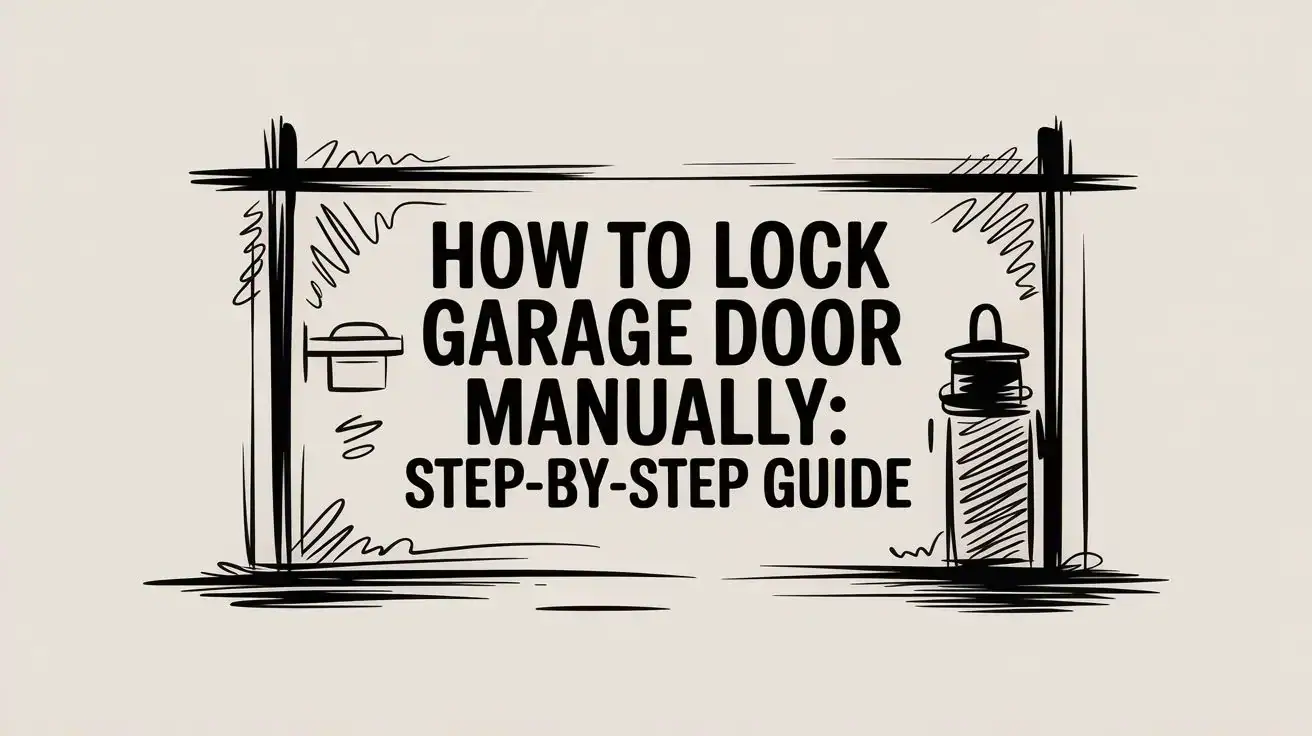
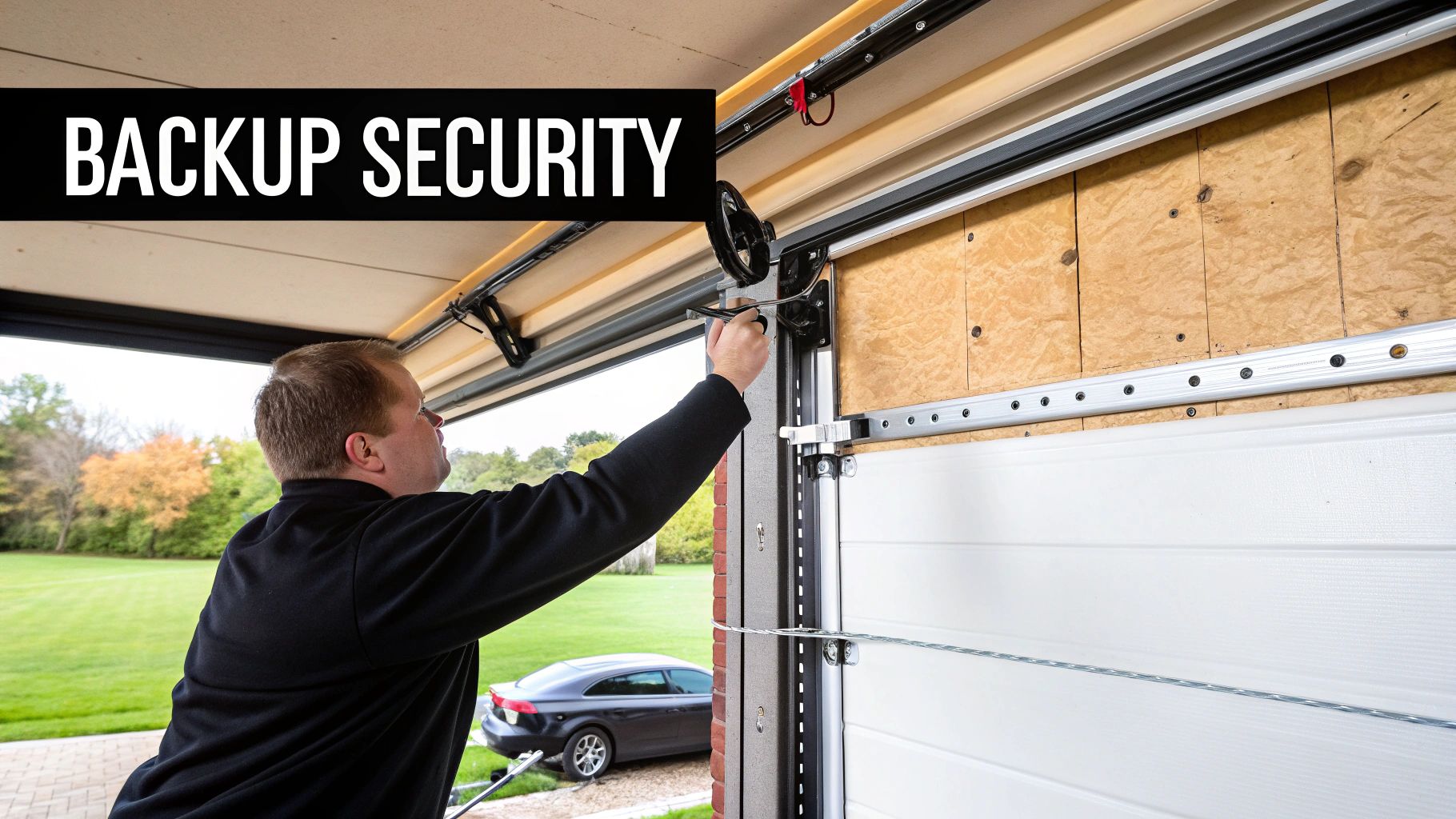
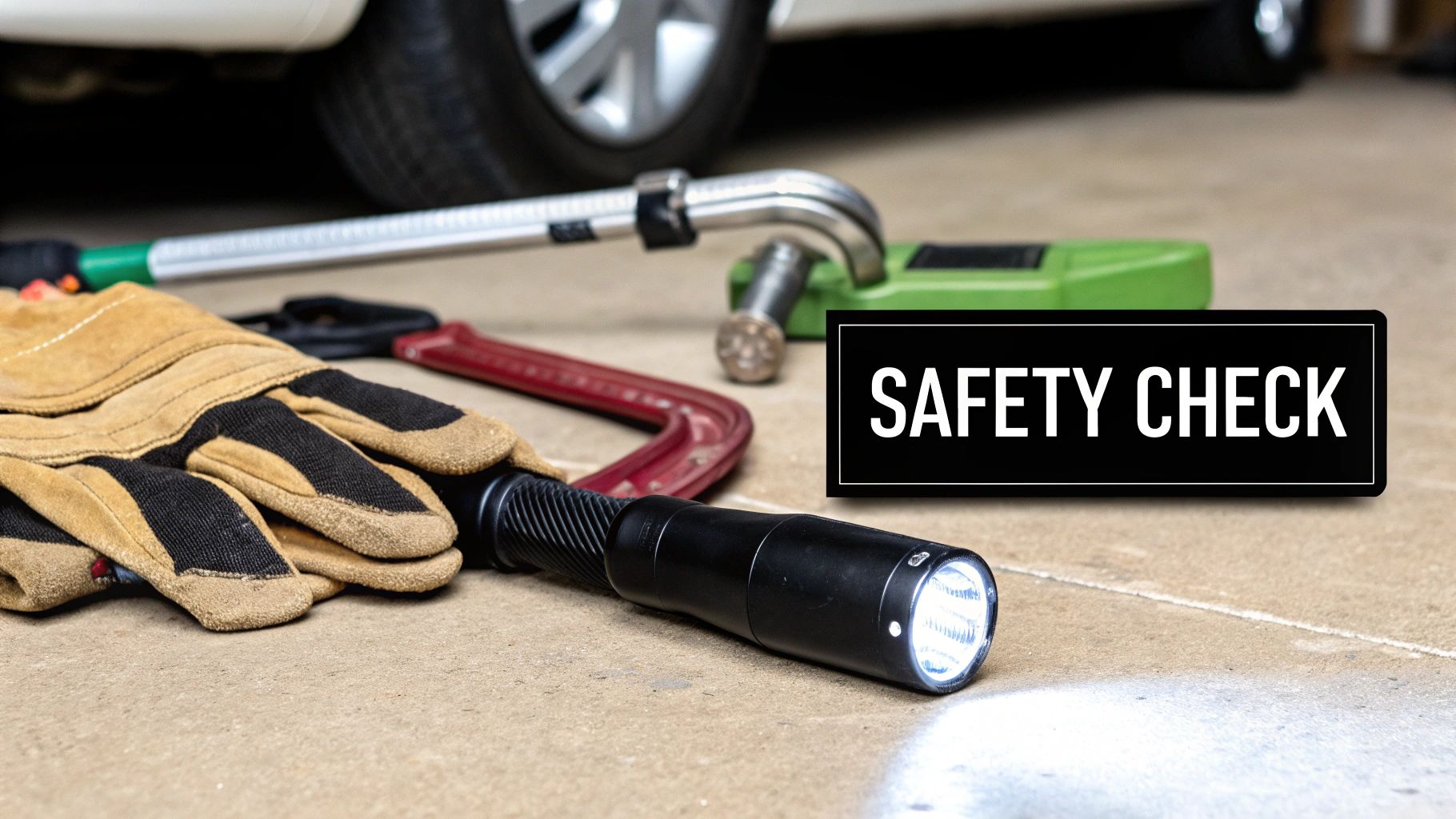
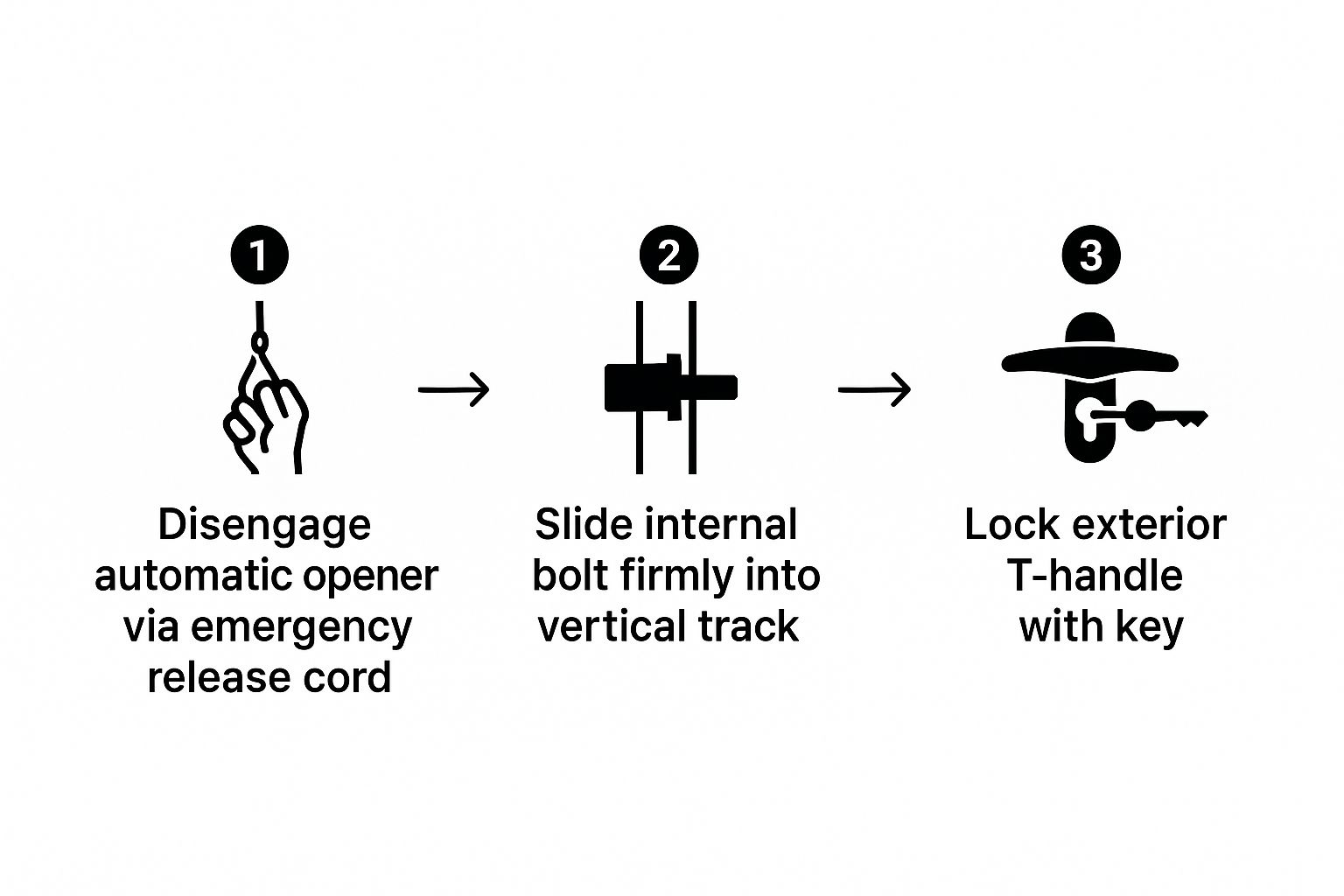
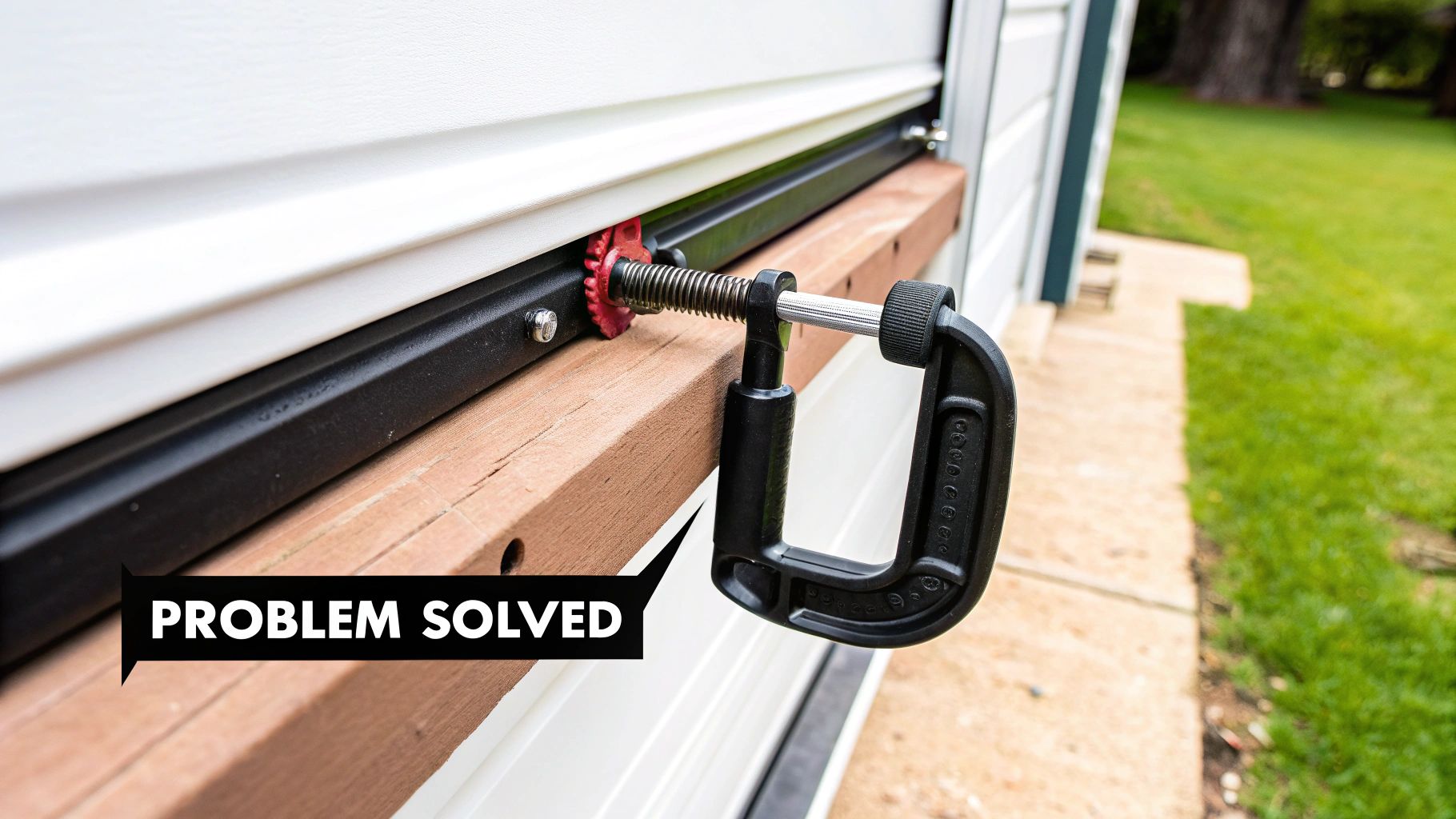

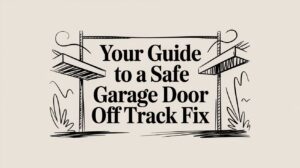


 (480) 548-0807
(480) 548-0807